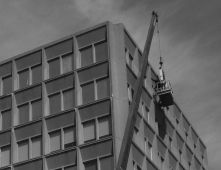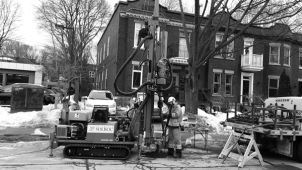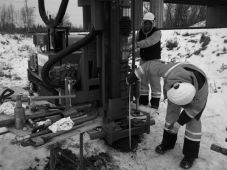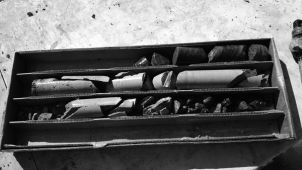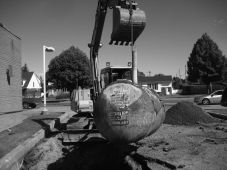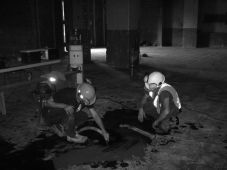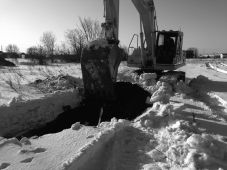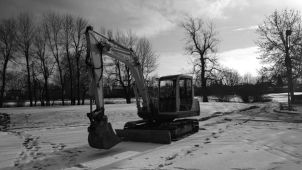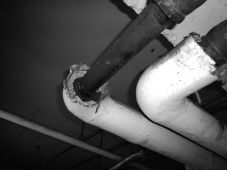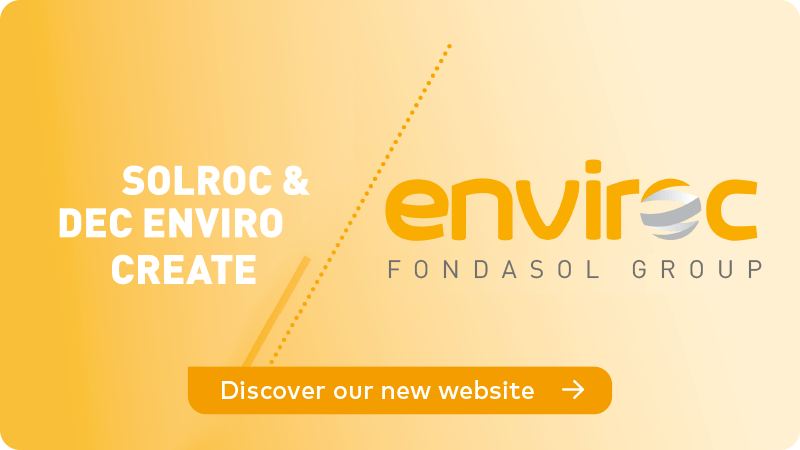SOLROC provides an integrated and innovative approach to environmental assessment, risk management, and the resolution of environmental problems.
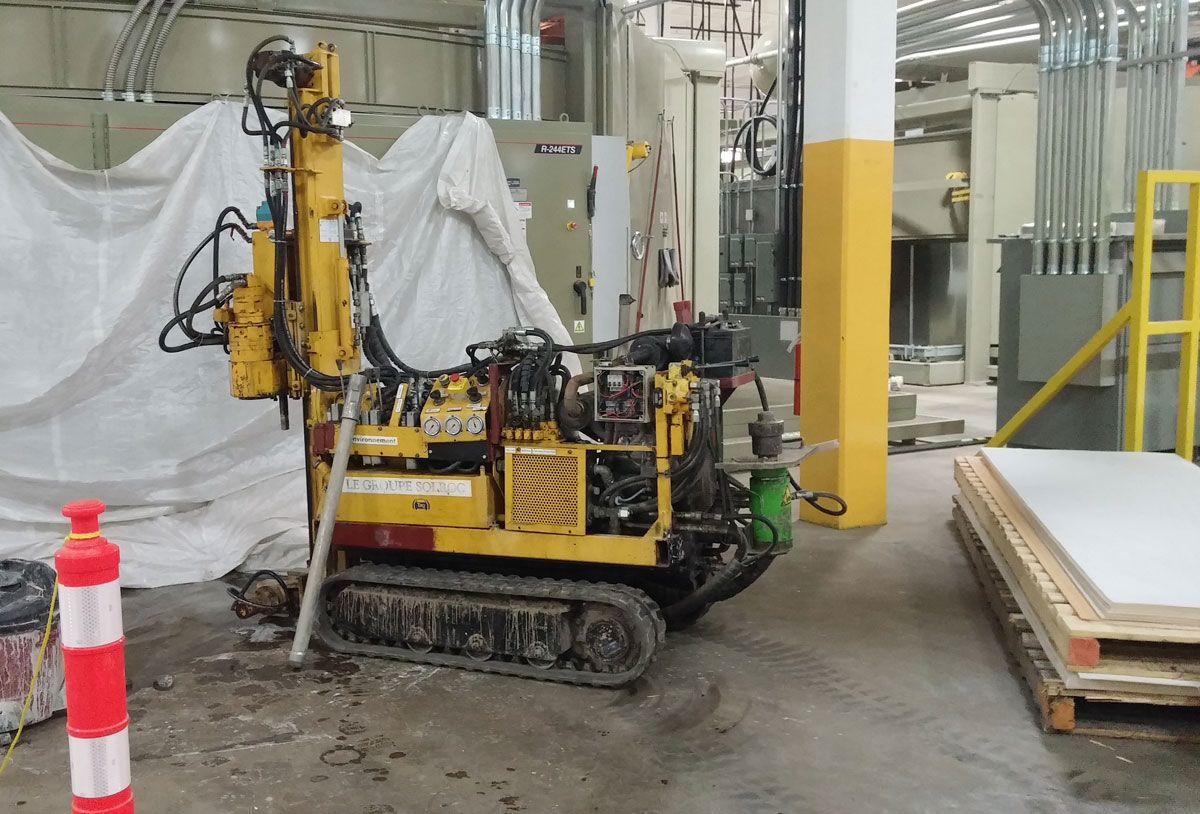
Drilling inside a building using a Sedidrill crawler drill.
Environmental Site Assessments, Phase I, II and III
- A Phase I Environmental Site Assessment, according to the CSA Z768-01 CSA standard, involves a historical research covering all current and past activities of a property. This study is typically performed during real estate transactions or with mortgage refinancing.
- A Phase II Environmental Site Assessment includes surveying for sampling and chemical analysis of soil and/or groundwater. This study is performed when a potential risk of contamination to the study site is discovered during the Phase I study.
- Should contaminants be discovered on the study site during the Phase II study, a Phase III Environmental Site Assessment will be performed. This is a more comprehensive evaluation which will establish the limits of the contamination with more certainty and which will determine the volume of contaminated materials.
- When a property is subject to the Environment Quality Act due to a risky activity currently or previously operated on a site, environmental studies are required to be certified by one of our certified experts which will then be submitted to MDDELCC.
Remediation of contaminated site and tank removal
In conjunction with its sister company REMEDIASOL, SOLROC has completed hundreds of environmental remediations, both as a contractor and supervising firm. Both firms maintain a suitable inventory of equipment required for work performed on land and buildings that are difficult to access. The process of remediation of contaminated sites may among others include:
- Preparing a budget and schedule depending on the method used
- Liaison with provincial and federal government agencies
- Request for certificates of authorization from the MDDELCC and municipalities
- The remediation of contaminated sites:
- Using conventional methods of excavating and disposing of contaminated soil at an authorized disposal center according to their level of contamination
- Using on-site or off-site treatment through bacterial biodegradation
- Maintaining contaminants including a complete study to evaluate the toxicological and ecotoxicology risk
- Supervision and monitoring of work
- Preparation of a full report covering all remediation work
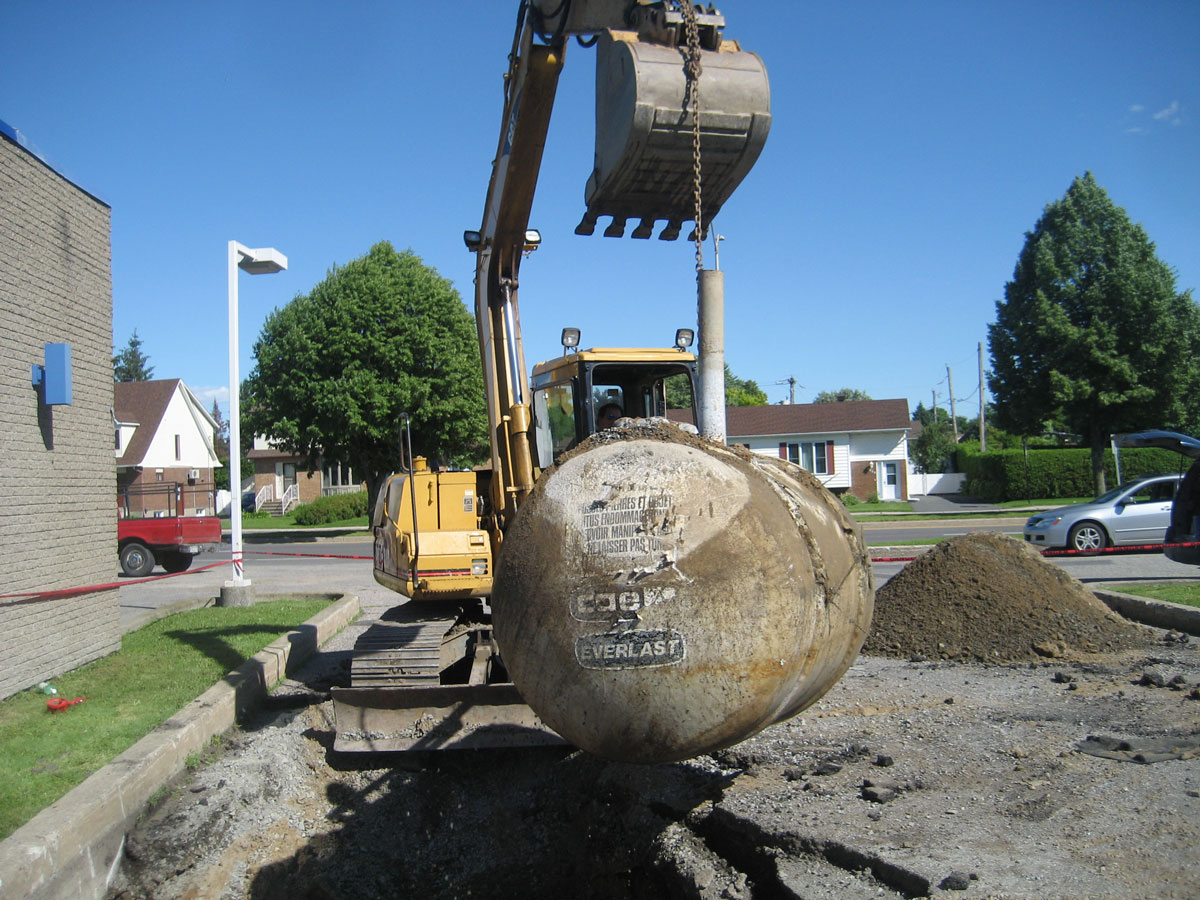
Removal of an underground tank.
When the presence of an abandoned underground storage tank on a site is suspected or confirmed, SOLROC will:
- Locate the underground tank
- Solicit bids from contractors in regards to work required to remove the tank
- Supervise operations, including gathering water and soil samples
- Perform remediation tasks in the event of soil contamination due to tank leaks, including off-site excavation and management of contaminated soil
- Draft a detailed report covering all operations involved in removal of the tank and the remediation work
Hydrogeological study
SOLROC performs a hydrogeological study used to evaluate the hydrogeological properties of a site and a study of the deep water table (flow direction, water source). This type of study allows us to assess the risk of contaminant migration, plan the supply of drinking water, to determine the method of treatment for waste water and develop public services for unserved communities.
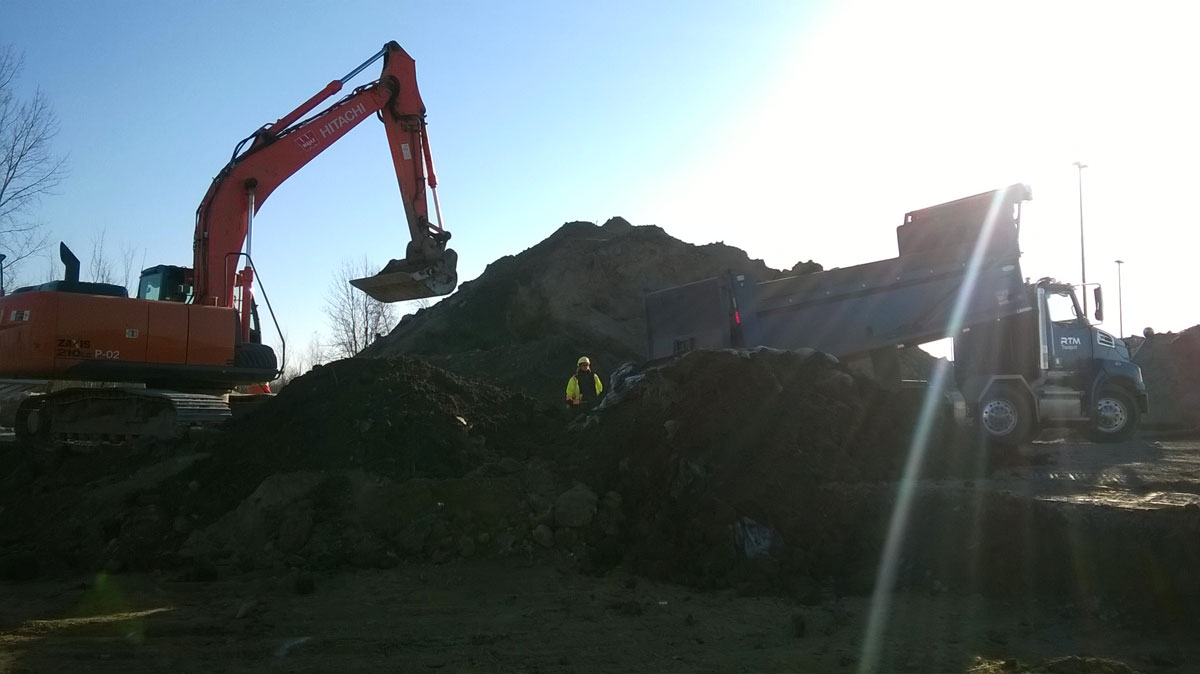
Excavation of contaminated soil and loading into a truck for off-site disposal at an authorized center.
Environmental permits and certificates of authorization
SOLROC will request, on behalf of its industrial clients, permits and certificates of environmental authorization from governmental agencies.
Environmental compliance audit
SOLROC will conduct environmental audits for industrial properties, define the conditions of factory processes, and assess compliance processes with laws and regulations.





